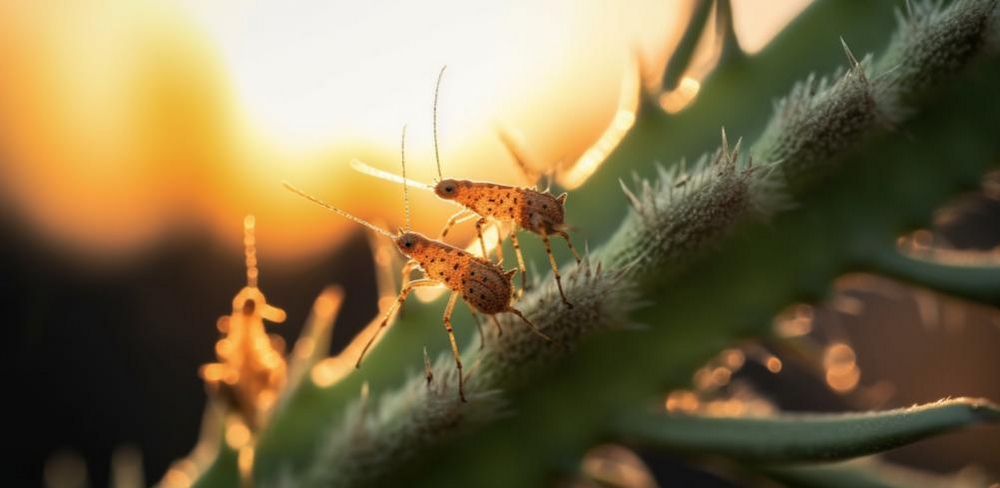Macro Photography: A Journey into the Enigmatic Microcosm

A Dalliance with the MinusculeThere comes a point in the life of every photographer where one hungers for a fresh perspective, for a new world ripe for exploration. Ladies and gentlemen, I present to you the realm of macro photography—a fascinating dimension that dwells within the confines of everyday objects and nature's smallest inhabitants.
It is a curious land of minute detail, where the seemingly banal transforms into the extraordinary. You are invited, nay urged, to embark on this journey into the enigmatic microcosm with me, as I attempt to illuminate the path towards capturing the captivating essence of the infinitesimal.
Arming Oneself for the OdysseyBefore setting off on this photographic odyssey, we must first equip ourselves with the proper tools for the task. The heart and soul of macro photography lies in the lens—an essential piece of equipment that requires both careful selection and a degree of mastery.
While one may be tempted to purchase the most extravagant, feature-laden lens on the market, a word of caution: the quest for the perfect lens should be driven by practicality, rather than the promise of gadgets and gizmos. Those with limited experience in this field would do well to begin with a simple, yet effective, 50mm or 60mm macro lens which offers versatility and ease of use.
For the more seasoned explorers among us, a 100mm or 180mm lens may be more fitting. These lenses provide a greater working distance between the photographer and the subject, making it easier to capture skittish insects and other elusive quarry.
The Trifecta of TechniqueIn the realm of macro photography, three crucial elements converge to create the perfect shot: aperture, shutter speed, and ISO. By mastering the delicate balance between these forces, we can harness the power to freeze time and capture the extraordinary beauty that lies hidden within the microscopic.
Aperture
The aperture controls the amount of light that passes through the lens, affecting both the depth of field and the exposure of the image. A smaller aperture (higher f-number) results in a greater depth of field, ensuring that more of our minuscule subject is in focus. However, this also means that less light will reach the sensor, which can lead to underexposure. Conversely, a larger aperture (lower f-number) allows more light in, but results in a shallower depth of field. This is where the delicate dance of compromise begins.
Shutter Speed
Shutter speed controls the duration of the camera's exposure to light, and plays a crucial role in capturing sharp, crisp images. In the world of macro photography, even the slightest movement can result in a blurry, unfocused mess. To combat this, one must employ a faster shutter speed—though this tactic brings its own set of challenges, as it also reduces the amount of light entering the camera. Once again, a balance must be struck.
ISO
The final piece of the trifecta, ISO determines the sensor's sensitivity to light. A higher ISO setting allows for a faster shutter speed and smaller aperture, but may introduce unwanted noise and grain to the image. When venturing into the realm of the infinitesimal, it's crucial to find the perfect equilibrium between these three elements to avoid sacrificing image quality.
Mastering the Art of LightingGood lighting is paramount in macro photography, as it determines whether the intricate details of our minuscule subjects are revealed or lost in the shadows. Natural light is the most abundant and accessible source, but it can be unpredictable and uncooperative. Overcast days provide a soft, diffused light that's perfect for capturing delicate details, while direct sunlight may create harsh shadows and overexposed highlights. When natural light fails us, artificial light sources such as ring flashes or LED panels can save the day.
Experimentation: The Key to SuccessAs with any art form, the key to success in macro photography lies in experimentation. It is through trial and error that we learn the nuances of our equipment, refine our techniques, and develop our own unique style. With the right mindset, even a failed attempt can be a valuable learning experience, serving as a stepping stone towards future success.
In Conclusion: Embrace the MinusculeThe realm of macro photography offers a fresh perspective on the world around us, revealing the hidden beauty that lies within the tiniest of subjects. By equipping ourselves with the proper tools, mastering the trifecta of technique, and embracing the spirit of experimentation, we can unlock the door to this enchanting microcosm and capture images that both captivate and inspire. So let us journey forth, my fellow adventurers, and delve into the unknown depths of the minuscule!
|
|






